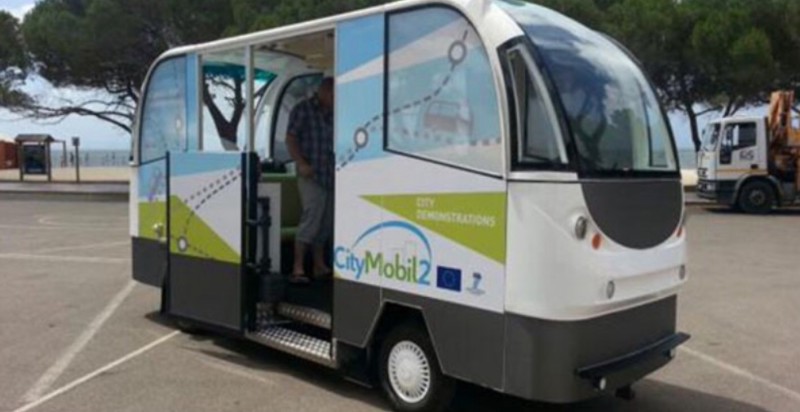Rapid,Intelligence
Safety ,On time
Low energy consumption,
Environmental protection,
Future urban public transport system.
Future Urban Public Transport System
Automation-guided (driverless) Public Transport
British and American researchers first began in the 1960s to undertake in-depth studies of urban public transport systems of the future. Breaking out of the conceptual frameworks of human-driven vehicles and rail-track transportation, an automation-guided transport system fully possesses the traditional travel flexibility of human-driven vehicles as well as the advantages of conventional rail systems in terms of buffer distance minimization as well as load capacity maximization. Its superior features include smart intelligence, flexibility and convenience, efficiency and orderliness, stability and security, the economy of construction and maintenance, relative ease of building and modification, and other advantages. Furthermore, its technology entails elements of sustainable growth and demand adaptability; thus it fits in as a plausible modality of future urban public transport development. Automation-guided public transport systems mainly consist of two sub-categories: personal rapid transit (PRT) and group rapid transit (GRT) systems. The concept of automation-guided transport systems has surfaced for over 40 years. As early as the late 1960s, the US Ministry of Housing and Urban Development began research on PRT’s. In 1970, USA built the inaugural global unmanned PRT, namely the Virginia Morgantown Personal Rapid Transit System, covering a total length of 13.2 km, with a total investment of $13 million. It was built as a municipal pilot project with Government funding. The then US President Richard Nixon had supported the initiation of its concept, and Boeing Vertol Company was responsible for its construction. Since then, after several decades of technology development and capacity building in related infrastructure engineering, there have been corresponding advancements in the new automation-guided transportation system, in aspects of comfort, automation, environmental protection, energy efficiency, and noise control. Future traffic control development, riding on enhanced internet communication and smart intelligence, will help usher in an era of development of smart, automation-guided transport systems.

Personal Rapid Transport (PRT) System
Intelligent unmanned small electric-car transport system
- Personal Rapid Transit (PRT) is an intelligent unmanned small electric-car transport system, wherewith a modest number of passengers can be taken on board on a by-demand basis at various nodes of the PRT network and delivered speedily and safely to their respective destinations with minimal or no interruption. Unlike traditional buses, trams and subway systems and other fixed-line traffic, PRT is the world’s first public traffic modality for point-to-point transportation. With the right infrastructural set-up, PRT is usable for urban transportation as well as rural and new development areas. In recent years, PRT technology development has made further progress, shrinking the transit carriage size to only 4-6 person capacity. The emergence of the comprehensive smart centrally-controlled system has resulted in significant improvements to the safety and stability of the PRT vehicles, obviating the heavy protection structures and the massive operational machinery needed for traditional human-driven motor vehicles. Furthermore, the use of electric drive has eliminated the complex mechanical equipment required for motor vehicles powered by conventional fossil fuels with their associated ignition, stroking and cooling mechanisms. These structural evolutions have resulted in a significant weight reduction of vehicles for the PRT system, thereby bringing about corresponding cost savings in the supporting and delivery infrastructures as compared with traditional transportation systems. This has enabled the PRT system to focus its design on improving passengers’ experience and comfort and the system’s smart automation usage. Compared with traditional transport systems, an advantageous characteristic of the rapid passenger transport system is its individualized point-to-point delivery capability without need for intermediate transfer, giving the passenger a flexible yet private travel experience. PRT systems typically use small vehicles, each with a low payload capacity of only 500kg and a speed of 40km/h, with almost 24-hours non-stop operability. With demand-based flexibility for establishing passenger-stops and fully automated operation, the PRT system is potentially superior to buses, light rail and other traditional transportation modes in delivery capacity and overall economic benefits. High-technology intelligent control system creates ease and convenience in the riding experience of passengers, who essentially need not waste much waiting time while enjoying point-to-point transport. In terms of system usage, PRT operations produce zero direct carbon emission and very low noise level, and at the scaled-up operational size, its systemic maintenance could be a relatively simple and low unit-cost process. Hence for future sustainable urban developments, it is indeed one of the top choices of personal transportation modalities.Under the control of sophisticated automation, a PRT system can theoretically shuttle amidst a complex road network. Its guidance system can be installed alongside and within the driveways. Conceptually, well-planned PRT systems can flexibly shuttle amidst shops, between buildings, and crowded places and residential areas. Aided by advanced engineering and integrated automation technology, PRT possesses not only the convenience, flexibility, comfort and privacy advantages of small cars but also the enhanced security, punctuality, energy conservation, land-use efficiency, high transportation efficiency and other inherent advantages of traditional rail transportation. This can gradually be evolved into green transport modality befitting future cities built on sustainable development paradigm. The advanced characteristic of the PRT system is also reflected in the efficiency of its energy consumption. The current generation of PRT vehicles is equipped with a comprehensive system of the obstacle detection mechanism, enabling the vehicles to interactively brake and manoeuvre upon encounters of pedestrian and other vehicles. However, constrained by the present stage of physical developments, there are naturally certain limitations in such manoeuvres vis-à-vis human driving, at best overcoming their interference by slowing down along the guided pathways or activating emergency stops in extreme circumstances. While simulations have demonstrated the potential of PRT systems in mimicking human driving, including bypassing of obstacles and repeated speed changing and braking, it remains inefficient to place public PRT pathways in the midst of other motorized and non-motorized traffic. Adherence to segregated PRT systems will avoid the unnecessary wastage and inefficiencies arising from non-systematic interference and manoeuvres, obviating the consequential loss of comfort and transport capacity. This will more fully realize the inherent green technology, economy, high efficiency and other advantages of PRT systems.


Group Rapid Transit (GRP) System
Similar to PRT but one that ferries more passengers.
- Group Rapid Transit system (GRP) is similar to PRT but one that ferries more passengers. GRT is conceptually a horizontal elevator system, one that provides public transportation with best optimization of travel time and resources. An ideal operational mode suited for densely populated heavy traffic zones is one that involves automated departure upon receiving a pre-set number of passengers sharing the same departure point and destination. It carries a moderate passenger load which is normally between 12 to 70 persons, hence it can be viewed as a form of auto-driven public bus. Like PRTs, in addition to dedicated routes for frequent trips with heavy passenger capacity, the GRT can set suitable bifurcation or multi-furcation routes to selectively bypass the main routes and to collate passengers from other feed-lines, with short frequency intervals of minutes or even seconds.Currently, only one main GRT system is in operation, i.e. that linking the Amsterdam Airport to the Rivium Business Park, designed by the “2getthere” Company using unmanned vehicles. A small-scale GRT system can be envisaged to shuttle residents and tourists across Singapore’s resort island of Sentosa, after forthcoming testing under a memorandum of understanding signed on 12th Oct 2015 between Singapore’s Transport Ministry and Singapore’s ST Engineering Co and Sentosa Development Corporation.
